Predictions and the theory of gravitational time
The theory of gravitational time and divergent coordinate systems will undoubtedly be controversial before it becomes accepted. Covered here are 14 predictions that follow from this model of time and relative geometry that are unaccounted for by existing relativity based models.
1. Bullet Cluster
The model of spatial dilation as the mechanism of gravity and the source of the equivalence principle predicts exactly the lensing effects that we observe in regards to ultra massive clusters with a significant relative velocity as in the case of the bullet cluster. If two or more bodies of significant mass and velocity approach each other, the spatial dilation of each approaching body will eventually interfere. The result would be exactly what we see: A gravitational lens flare that does not align with the center of observable mass.
2. Relativistic Doppler Shift Without Naively Dilating Time
While the Newtonian Doppler shift follows from pure motion in a way that aligns perfectly with our observations of the Universe around us, relativistic Doppler shifts require that we dilate the time elapsed for the observer. See Consistent Simultaneity for why this is likely nonsensical. If the passage of this mysterious medium we describe as time does not dilate with respect to relative motion, but it is distance that dilates and in turn the dilation of this distance is what we experience as time, we can achieve precisely the same experimental results without applying
There is a blog post addressing this claim in the context of the Pound-Rebka1 experiment, where researchers at Harvard placed an emitter at
Where
3. Singularities
If spatial dilation is the mechanism producing what we experience as the force of gravity and this spatial density is relative, geodesics no longer terminate under significant gravitational dilation, following a similar principle to the fact that a number, no matter how small, can always be divided by
As several quantities, including
In a similar manner to which the human eye can only see a small range within the electromagnetic spectrum, there is no reason to believe that what we describe as a point of near infinite density is not of proportion to another observer at a difference spatial density. As relative motion can bring tones that are inaccessible to a human ear into the audible range, so too should a shift along this density axis bring into proportion a different spatial density.
4. Super Evolved Galaxies
As this model predicts a Universe in which all
In other words, although the logic behind the Big Bang is solid, and a state like the one described by that model likely exists at some point along this density axis, there is no reason to believe that all bodies within the Universe shared that temporal position concurrently.
Figuratively speaking, if this density axis were to be compared to the latitude of a position on the Earth's surface, there is no reason to believe that as we existed at the equator or the ultra-dense 'Big Bang' that there were not concurrent bodies existing at a lesser density in Chicago, eating horrendous pan pizza and hopelessly cheering for the Bears.
5. Grandfather Paradox
This theory of relative spatial dilation predicts a model of chronological ordering that is much more inline with the way we order events in
6. Fine Tuning & Fermi Paradox
SpeculativeSee Center of Mass Shift for more on this symmetry, and Relativistic Symmetry for a potential relation between this symmetry and our rotational velocity.
7. The Mass Independence of Gravity
This model relies upon a mechanism of gravity in which the kinetic state of an observer does not change in response to what we observe as gravitational acceleration. If it is space the dilates toward the observer while the observer remains in an inertial state, then
In other words, bodies of different masses accelerate at the same rate due to gravity for the same reason that a large person and a small person will lunge forward at the same rate if the car they are riding in slams on the breaks. Both bodies lunge forward at the same rate because it is not that they are being accelerated, but that the car around them is accelerating in the opposite direction. Likewise, the force applied to their respective seat belts will be larger for the larger person, in the same manner that a piano will impact the ground with more force than a pillow.
As in the car analogy above, the body in free fall is not accelerating, but rather space accelerates around that body until there is an external interaction, which than creates a change in velocity of the body that appears to be in free fall.
8. Equivalence Principle
The model of relative spatial dilation being proposed suggests that the equivalence principle is far more than a useful mathematical construct. Since the velocity of an observer in free fall due to gravity is found by:
We might write this as:
This describes the equivalence principle as the literal upward motion of the surface of a gravitational source, as a consequence of the integrated dilation of space along the radial vector to that position.
9. Michelson & Morley
Correlation, not prediction.Michelson and Morley2 are often credited with disproving the existence of a luminous ether by demonstrating that the speed of light does not vary according to the direction of the emission of this light, across the Earth's surface. The belief was that if a luminous ether existed, the motion of Earth through this ether would produce measurable drag in the direction of travel. When examined closer however, this experiment while incredibly clever, merely demonstrates the lack of ether drag normal to the Earth's surface. If we consider the principle of spatial dilation being proposed, this 'ether' would dilate in a radiating pattern from the center of mass of massive bodies as they move through space. Not only does this dilation of space in a radiating pattern not conflict with the Michelson Morley experiment, it predicts precisely the gravitational Doppler shift of light that we've confirmed experimentally.
10. Retro-causality
If an action is taken at
This should not be taken to imply that an observer at density
11. Lack of Gravitational Aberration
As this model of relative spatial dilation declares that this dilation of space is time, we can easily infer that objects that appear to share a time component of their displacement 4-vector may exist separated by some density, particularly if the spatial components of their respective 4-vectors are sufficiently separated. As the dilation of space being proposed increases as a function of the magnitude of motion through space, it must be that less dense coordinate systems exist in the 'future' with respect to an observer at a greater density. As this dilation of space is proportional to
In turn, if we extrapolate upon this model to describe a system similar to our own solar system, in which a vastly more massive body is orbited by one or more less massive bodies, the more massive body would exist at a greater density at the time of the emission of this spatial dilation, despite appearing to exist at a shared density to the orbiting bodies. This discrepancy in density would supersede the
This is somewhat synonymous with the notion that the dilation of space around the primary source of gravitation is responsible for the physical effects of gravity, and that gravity itself does not need to radiate from the body itself to exert it's effects at some distance
12. Two-Body Tidal Lock
If there exists a system of massive bodies in free space such that the theoretical spatial dilation around them is not too turbulent, as would be the case in two body systems of a reasonably small orbiting radius compared to that of other nearby bodies, this mechanism of gravity predicts a behavior similar to what we've described as tidal lock. If we describe this system such that the larger body is
If the effects of gravity are due to this theoretical spatial dilation being proposed, then as
Allowing that the mass densities, the radius and the orbital velocity are within a given range, this would produce an orbiting body which tends to orbit the larger body,
13. Consistent Simultaneity
Consider the elementary derivation of time dilation given in figure . We've confirmed experimentally that an observer traveling between points
If two observers,
It is utterly nonsensical to dilate time according to current interpretations of relativistic motion, and even more preposterous to dilate lengths and velocities to account for the asymmetries created. If
By applying
14. There does not exist a single experimental validation for the principle of relativistic time dilation
While Einstein is rightly credited with revolutionizing our concept of space and time, there has not been a single experimental validation of the theory that
The Pound-Rebka experiment1, the Ives-Stillwell experiment4 and other supposed confirmations of special relativity all rely upon relative motion being used to quantify the effects of time dilation. Applying
Not only does applying
Conclusion
While understandably this model will be met with skepticism as any model making such bold claims should be, this model creates no further asymmetries beyond that of spatial density, which in itself is in correspondence with the concept of cosmic inflation and provides a mechanism for the equivalence principle that produced GR in the first place. The asymmetries produced by current interpretations of relativity have become so widely accepted because they produce mathematical results that are consistent with our observations, to an extent. Terminating geodesics producing singularities, asymmetric mass effects seen on galactic scales in systems similar to that of the bullet cluster, the evolution of astronomical bodies that seems to defy our current understanding of time, and relativistic Doppler effects are either unaccounted for by current interpretations of relativity or are attributed to mechanisms that defy logic, often breaking the most fundamental of physical and mathematical identities.
The model being proposed requires far fewer modifications to pre-relativity theories than SR or GR itself, and conflicts with not a single experimental validation of either SR or GR. The idea of being subject to motion and spatial dilation that is not directly perceivable due to the concurrent dilation of all measurement apparatus is understandably uncomfortable, but the math leads where it does, and that is not to the dilation of time. If any variable dilates at the same rate, and dilates in the same manner as time itself, the dilation would be directly imperceivable.
When the mechanism that produces the relativistic effects we observe without the need to dilate time also yields a peculiar velocity that coincides with direct observation, and the dimensionless proportional dilation of space corresponds to
Footnotes
-

